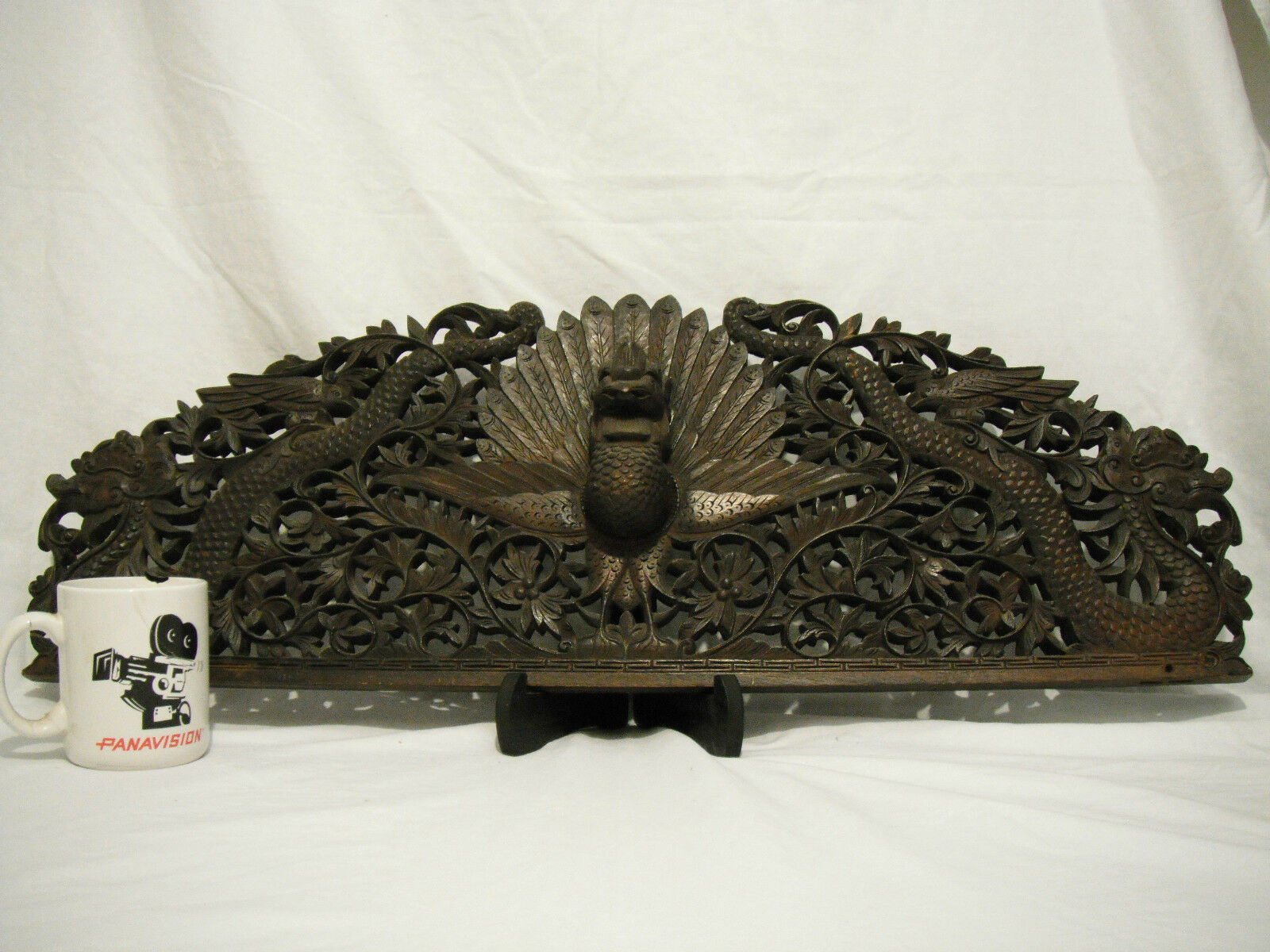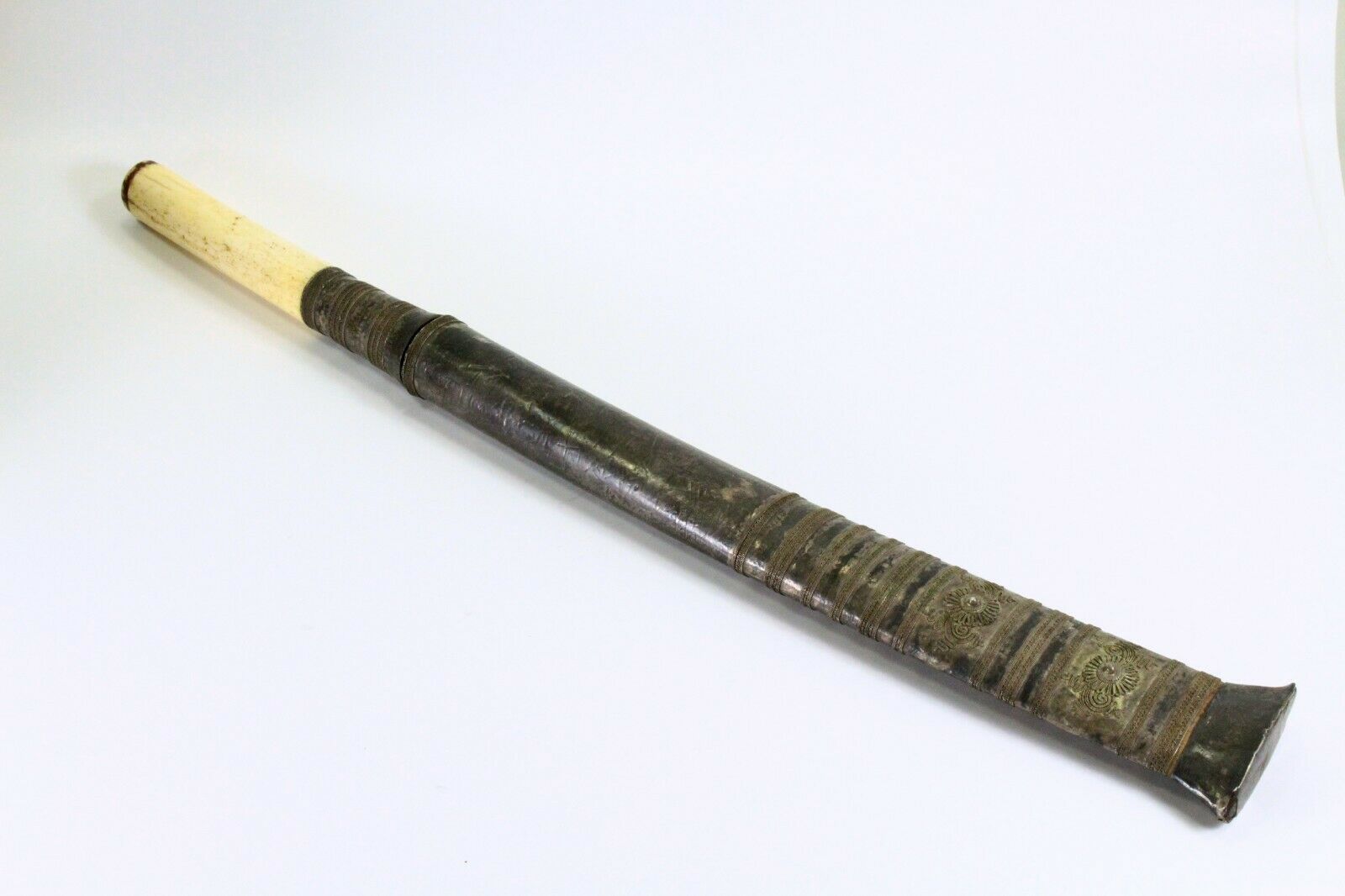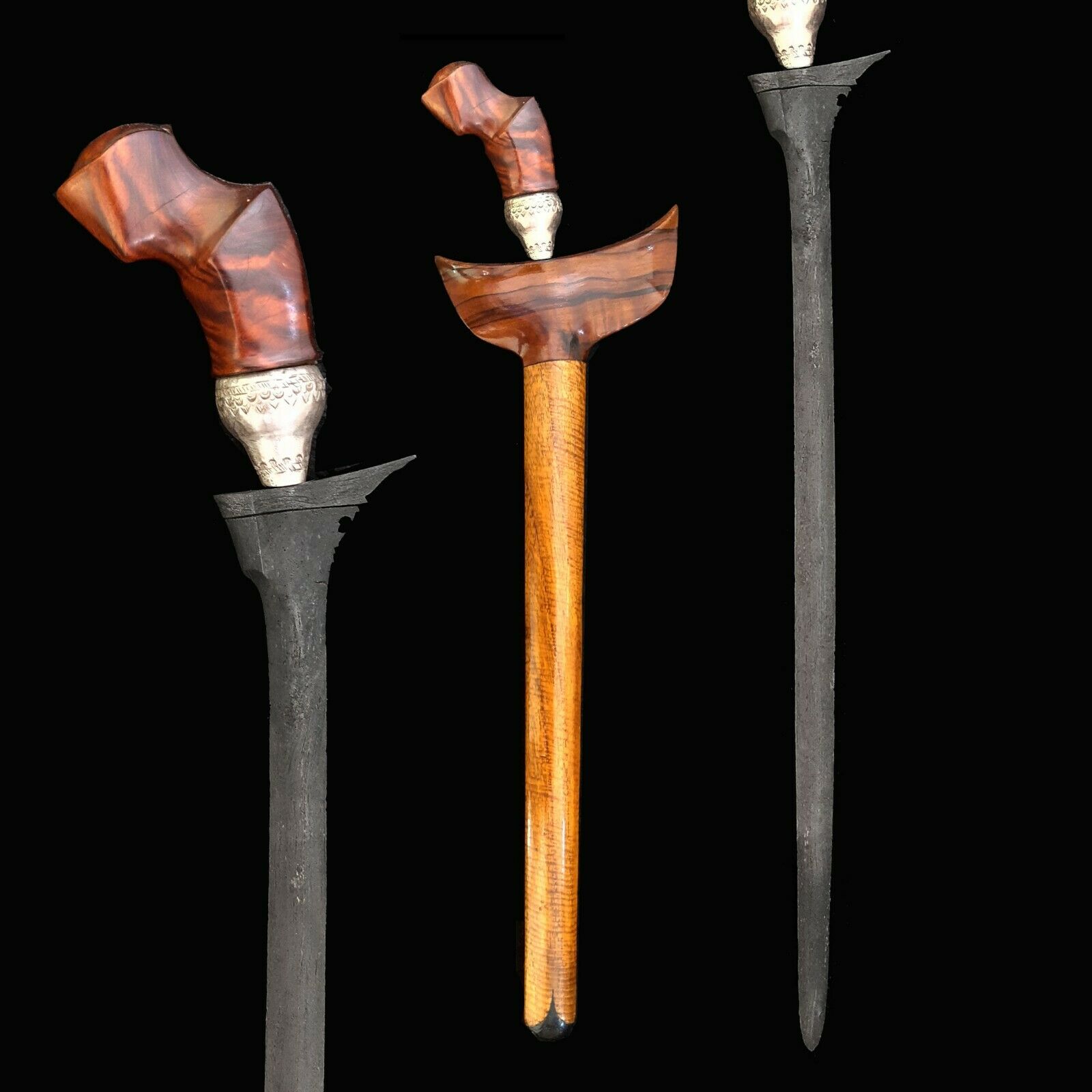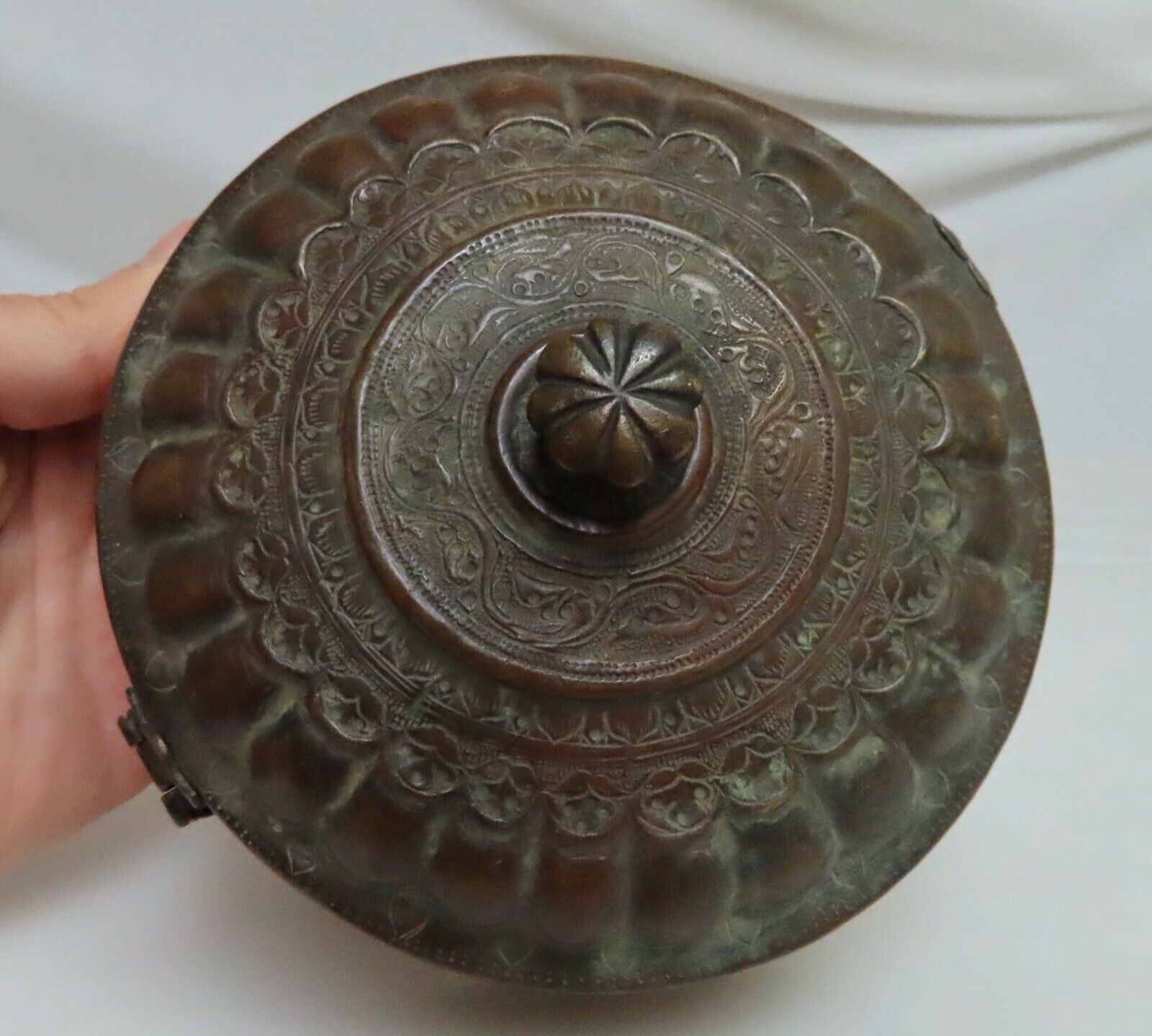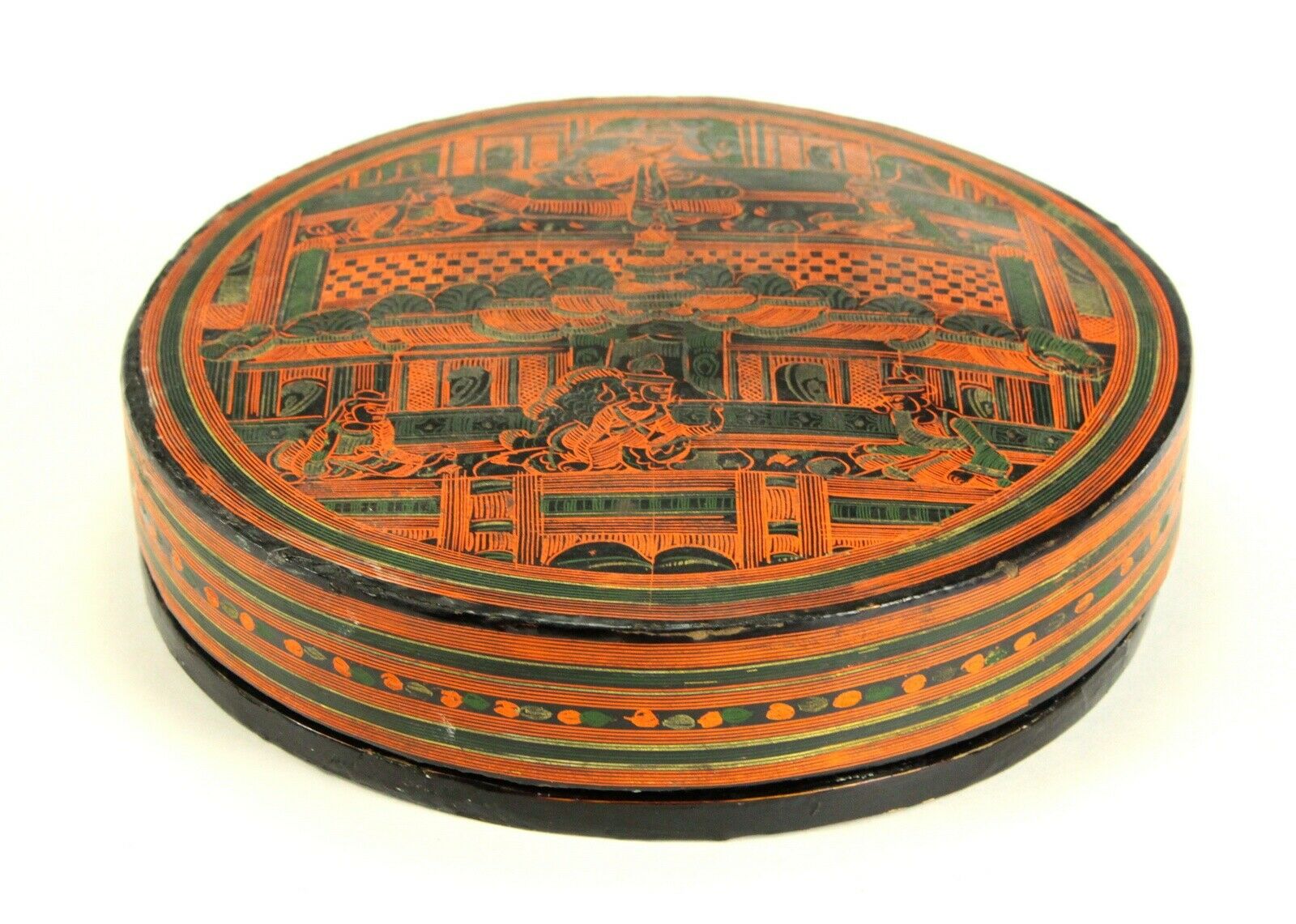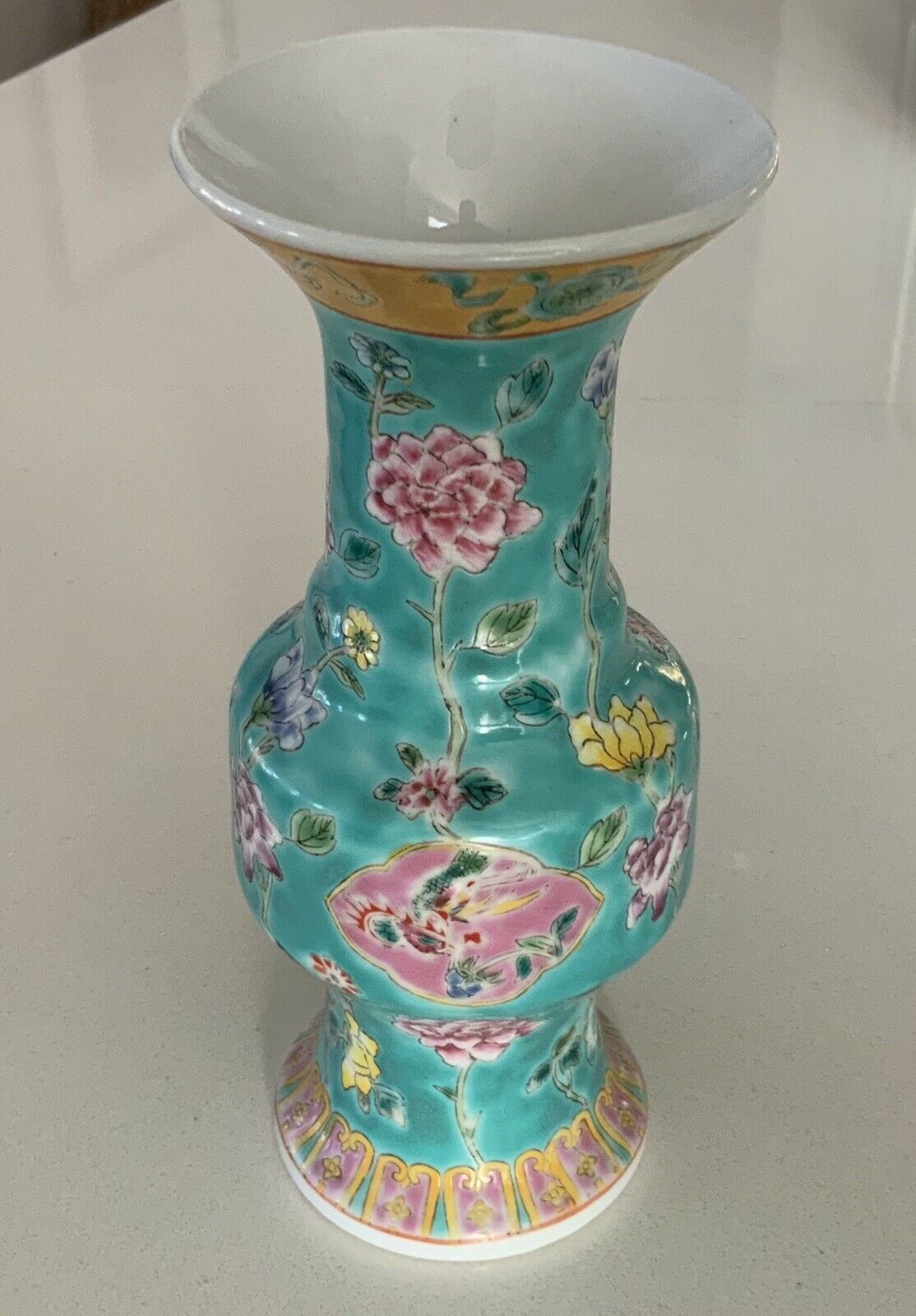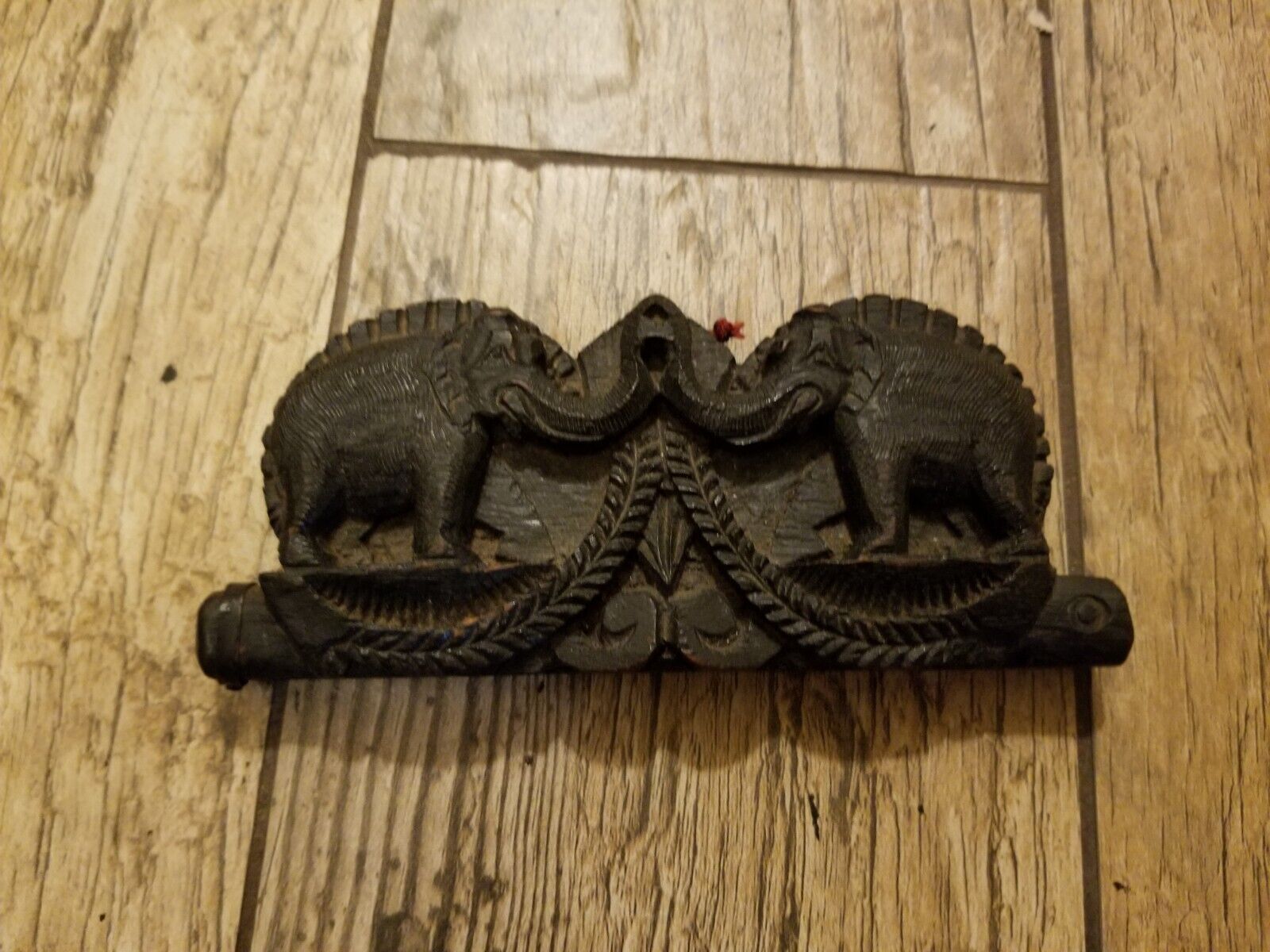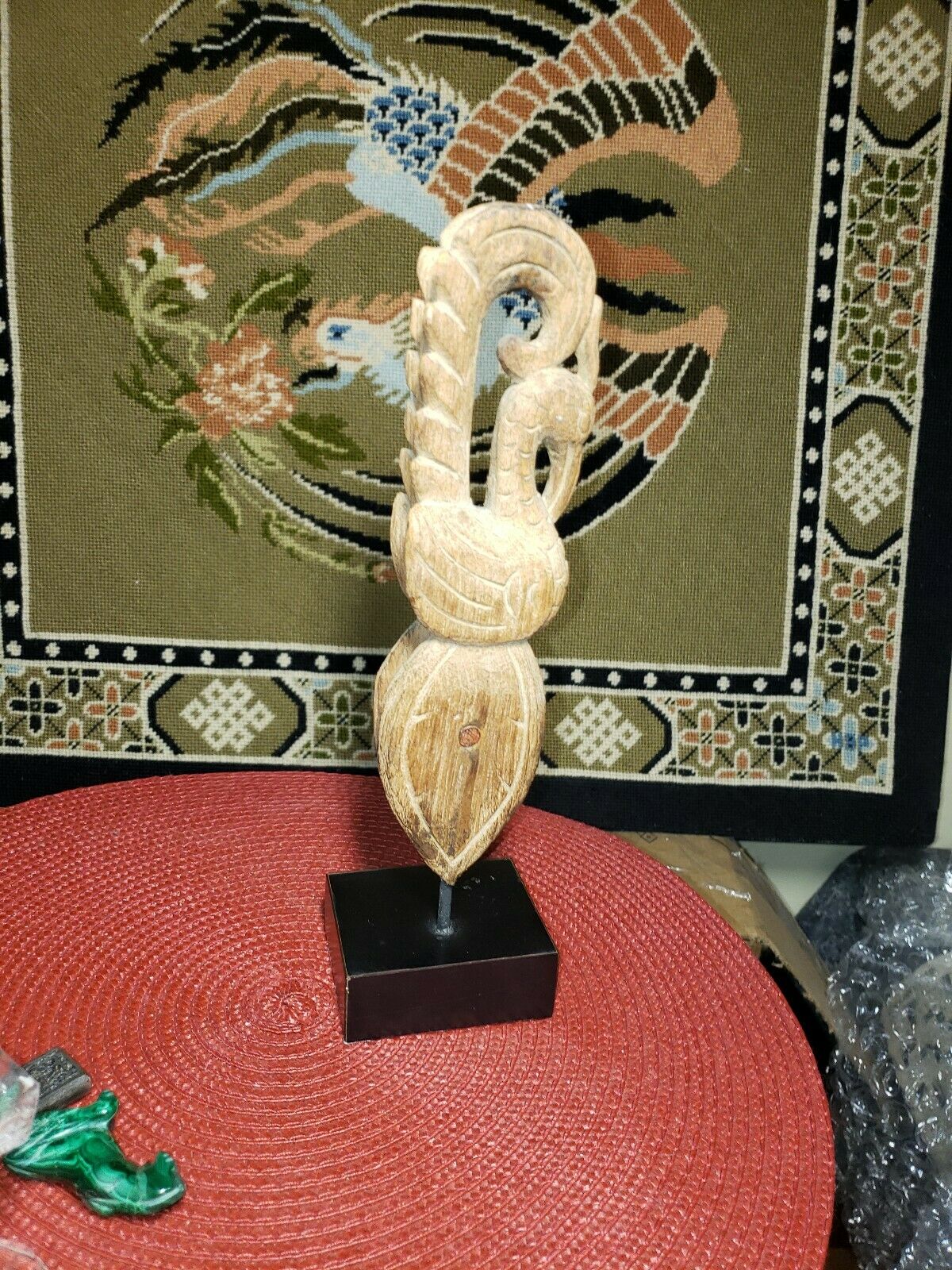-40%
Exceptional 19th century Indonesia Ebony Baroque Wood Screen Carving Garuda 29”
$ 607.19
- Description
- Size Guide
Description
Exceptional 19th
century Indonesia Ebony Baroque Wood Screen Carving Garuda, 29”+ inch 75 cm
Item Description:
Measurement:
Width: 29 ½” inches (74.9 cm)
Height: 10” inches (25.4 cm)
Depth: 2 ½” inches (6.4 cm)
This is an ornately hand carved screen that features the figure of Garuda represented as a peacock putting on his full display. This peacock is framed by Nagas (serpents) one on each side. There are two lesser birds perched above the Naga looking as they might dominate them. Both sides of this screen have been fully carved as it is meant to be seen on both sides. This baroque 19
th
century Indonesian hardwood carving has exquisite detail, all the features are fully rendered, the scales of the serpents, the feathers of the peacock, the intertwining leaves and vines all high art. This manifestation of Garuda as a peacock adds to his divine attributes both splendor and majesty. Garuda is the vehicle of the Hindu deity Vishnu that is a protector and preserver God of the Hindu trinity. Garuda is powerful in his own right, he uses his powers for good as a protector and rescuer. Gaurda helps to dissolve negative energies and guards the home and instills his great power to those he protects. This classical rendition with the figures and vines intertwined create this magnificent composition. It is hard to express the exceptional quality of this Baroque composition which appears as a complete piece. Even though it seems that it must be part of a larger piece. The bottom has two notches with a thru hole that would interconnect to something else. The carving is in excellent condition, I haven’t found a flaw under close scrutiny. It is an impressive piece measuring almost 30” wide and 10” tall and is 2 ½” deep and weighs 4+ pounds.
This particular carving is made out of
Makassar
ebony - Eben
(
Makassar Ebony is an exceptionally beautiful species of ebony only located on the
island of Sulawesi in Indonesia
and has been much appreciated by woodworkers all over the world through the past two centuries and most of it has been felled and used in high quality furniture.
This is determined by its density and color, and this is true ebony and is not an imitation
. It has now become a very scarce and expensive timber. The small available amounts on the market have led to very high prices, Makassar ebony nowadays belongs to the highest priced timbers in the world.
The wood itself is impressive; but the classical elements rendered in a formal manner dripping in detail put it over the top. Circa turn of the century – 1890’s to 1920’s . We collected this many years ago and have quite a number of Indonesian carvings of all types and styles. Please see photos for the condition and composition of this museum quality rendition of Garuda as the auspicious revered peacock. Email with any questions
I have been collecting artifacts for over 28 years and I have been a member of the EBay community since 1998 Please Bid with confidence.
·
Buyer info:
·
Packaging and shipping is done with care and completed in an expedient manner, shipping days are Tuesday and Thursday for gas conservation. If you have a special request we will do our best to adjust the schedule to accommodate your schedule.
·
It is my intention to be as clear and accurate as possible. In the event I make an error, I will always do my best to remedy the situation.
·
Please feel free to contact me with any questions. Please read the item description and submit any questions you might have for clarification of the item for sale prior to bidding. I can provide additional photos at the buyers request to assist you in your purchase.
·
Buyer should contact me within 3 days of auction ending, this assists in the expedient shipping.
·
Payment must be received within 5 days of auction ending.
Origin:
Balinese Hinduism is deeply interwoven with art and ritual and is concerned with a myriad of local and ancestral spirits. Balinese Hinduism is a heterogeneous amalgam in which gods and demigods are worshipped together with Buddhist heroes, the spirits of ancestors, indigenous agricultural deities and also with places considered sacred. Religion as it is practiced in Bali is a composite belief system that embraces not only theology, philosophy, and mythology, but ancestor worship, animism and magic. It pervades nearly every aspect of traditional life.
When I first began looking at the panel I thought perhaps the peacock was Parvani the vehicle or Vahana of Skanda. Because the peacock is flanked on both sides by a serpent that refers to the relationship between Garuda and the Naga in the epic story the Mahabharata. The additional birds add additional reference to the Lord of the Birds the eagle king Garuda. I have included the brief synopsis of the story below from Wikipedia
“Naga, ( Sanskrit: “serpent”) in Hinduism and Buddhism, a member of a class of semi divine beings, half human and half serpentine. They are considered to be a strong, handsome race who can assume either human or wholly serpentine form. They are regarded as being potentially dangerous but in some ways are superior to humans. They live in an underground kingdom called Naga-loka, or Patala-loka, which is filled with resplendent palaces, beautifully ornamented with precious gems. The creator deity Brahma is said to have relegated the nagas to the nether regions when they became too populous on earth and to have commanded them to bite only the truly evil or those destined to die prematurely. They are also associated with waters—rivers, lakes, seas, and wells—and are generally regarded as guardians of treasure. Three notable nagas are Shesha (or Ananta), who in the Hindu myth of creation is said to support Narayana (Vishnu) as he lies on the cosmic ocean and on whom the created world rests; Vasuki, who was used as a churning rope to churn the cosmic ocean of milk; and Takshaka, the tribal chief of the snakes. In modern Hinduism the birth of the serpents is celebrated on Naga-panchami in the month of Shravana (July–August).
The great nemesis of the nagas in the Mahabharata is the gigantic eagle-king Garuda. Garuda and the nagas began life as cousins. The sage Kasyapa had two wives (amongst his 13 wives, all prajapati Daksha's daughters), Kadru and Vinata, the former of whom desired many offspring, and the latter of whom desired few but powerful offspring. Each got her wish. Kadru laid 1000 eggs which hatched into snakes, and Vinata laid two, which hatched into the charioteer of Surya the sun god and Garuda. Through a foolish bet, Vinata became enslaved to her sister, and as a result Vinata's son Garuda was required to do the bidding of the snakes. Though compliant, he chafed and built up a grudge that he would never relinquish. When he asked the snakes what he would have to do in order to release his mother, Vinata, from her bondage, they told him he would have to bring them amrita, the elixir of immortality. Garuda stole the elixir from the gods and brought it to the serpents in fulfillment of their requirement, but through a ruse prevented them from partaking of it and achieving immortality. From that point onward, he regarded them as enemies and as food. (Book I: Adi Parva, Sections 16ff.)”
